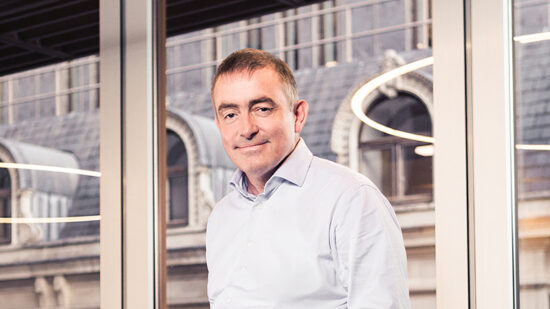Consumer Price Inflation (CPI) rose back to 10.1% in September to match July’s 40-year high after a slight dip to 9.9% in August.
According to the Office for National Statistics, higher food prices were the largest contributor to rising inflation, while the continued fall in the price of motor fuel prevented the latest CPI rate from setting a fresh record.
Myron Jobson, Interactive Investor senior personal finance analyst, said: “Inflation returned to a 40-year high of 10.1% in September, causing pain for many households. Rampant inflation in tandem with the rising cost of borrowing continues to hit peoples pockets hard.
“The biggest contributor to the annual CPI rate in September was housing and household services, which includes occupiers’ housing costs, private rents, electricity gas and other fuels. Prices in this area increased by 0.3% on the month, compared with a smaller increase of 0.2% in September 2021. Another large jump in food prices boosted the headline inflation number. Food and non-alcoholic beverage prices are up 14.6% over 12 months and up from 13.1% in August. These types of inflation can be even stickier because consumers are resigned to paying it as they form part of essential expenditure.
“However, the combined upward contributions were partially offset by the continued fall in the price of motor fuels which made the largest downward contribution to CPI inflation. While prices are still higher than a year ago, petrol prices fell by 8.7 pence per litre on the month and diesel prices fell by five pence per litre.
“High inflation is staying long past its welcome, but we might have to wait a little bit longer for a palpable reprieve. The government has reined in plans to help households with their energy bills, meaning bills could now rise sharply in April. According to Energy analyst Cornwall Insights, the average annual energy bill could go up by 73% from £2,500 to £4,347 a year from April 2023.”
BoE caught between a rock and a hard place
So what does it mean for the next monetary policy committee meeting on 3 November? Well, industry commentators are split on how high the BoE will go.
Neil Birrell, CIO at Premier Miton Investors, said: “The issues caused directly by the mini budget might have eased, but the pressure on the consumer and the bond market remain in place. The BoE would be looking at a full 100bps increase at its next meeting if it weren’t for the pain the consumer is feeling and, given the reversal of government policy, that is only going to get worse. This inflation number leaves the Bank between a rock and a hard place.”
Quilter Investors CIO Marcus Brookes said: “As we head towards the winter and demand for gas increases, we will begin to see higher energy bills really come into play. While prime minister Liz Truss’ energy plan means they are capped at £2,500 for now, it has been made very clear that this iteration of government support will not be in place for as long as was once promised, and this could well have a knock-on effect on inflation. The dip in inflation seen in August appears to have been a fluke, and with the rapidly changing environment we are currently living in we are unlikely to see inflation fall for some time yet.
“One thing this will not have done is caused the BoE to reassess its approach to interest rates. It may be satisfied by the moves made in Westminster for now, but in the coming weeks, we will see what it really makes of the government’s fiscal policy as it makes its next move at its November Monetary Policy Committee meeting. This is just a mere few days after the OBR is due to update its forecasts on 31 October, so more volatility in the market is expected.
“However, the fact that the new chancellor, Jeremy Hunt, has swooped in and reversed almost all of the costly changes announced at Kwasi Kwarteng’s mini-budget could go some way to help and the Bank may opt to dial down the hawkish rhetoric for now. That said, today’s news shows inflation remains stubbornly high and likely means the Bank feels it has no choice but to take decisive action with a 75 basis points hike.”
High rates environment could be short lived
Although hawkish action from the BoE is expected to continue, Steve Windsor, principal at Atrato Group, believes that the Bank could bring interest rates down as quickly as it has raised them once inflation normalises. “This morning’s UK inflation numbers remain elevated, and the market is now predicting that inflation will remain high throughout 2023.
“It’s important to remember that inflation is a year-on-year measure, and so the base effect of higher inputs disappears over a 12-month period. We will likely start to see the energy price component of the inflation basket begin to normalise over the coming months, particularly as we get through the anniversary of the start of the war in Ukraine in February. However, higher interest rates are now driving higher inflation as they feed through to an increase in mortgage costs. The mortgage effect is set to become more material as many fixed-rate mortgage periods roll off.
“The worsening cost-of-living crisis and the potential ensuing deep UK recession should at least mean that the high-rate environment is short lived. The Bank of England could well be cutting rates just as quickly as it raised them once inflation normalises towards the back end of 2023.
“Investment wise, companies that have relied on cheap equity to fund a lack of near-term profit are likely to struggle in the current climate. Cheap equity funding is no longer available and that whole business model now feels very dated. Likewise, companies that have a high percentage of floating rate debt face significant challenges as most will now have cash flow dilemmas. And finally, in light of the worsening cost-of-living crisis, safe haven investments are only really likely to be found in non-discretionary spend sectors.”







